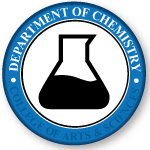Document Type
Article
Publication Date
2016
Publication Title
Journal of Advances in Medical and Pharmaceutical Sciences
Volume
6
Issue
4
First Page
1
Last Page
10
Abstract
Aims: To demonstrate the efficacy of several small molecular weight compounds having hydrazide groups, for inhibiting the growth of Mycobacterium tuberculosis. To show these same compounds have favorable drug-likeness properties.
Study Design: To synthesize tuberculostats and test their antibacterial activity in-vitro.
Place and Duration of Study: University of Nebraska, Durham Science Center, 6001 Dodge Street, Omaha NE 68182, and Texas A&M Health Science Center, Department of Microbial Pathogenesis and Immunology, 8447 State Hwy 47, Medical Research and Education Building, Room #3012, Bryan, TX 7780. From January 2015 to June 2015.
Methodology: Hydrazide groups were formed by covalently bonding hydrazine onto small molecules having a single aromatic ring by utilizing microwave excitation and evaluating for antibacterial activity. These compounds were placed into tissue culture media at various concentrations and then tuberculosis bacteria were added to determine the level of growth inhibition. Growth inhibition of the bacteria was measured as a function of compound concentration for assessment and comparison.
Results: Compounds A, B, C, and D carry hydrazide groups with various substituents that are bonded to a single aromatic ring. All four compounds show zero violations of Rule of 5, indicating favorable absorption and membrane permeation. All four compounds showed greater than 85% growth inhibition of bacteria at concentrations below 50 micrograms per milliliter, while assayed by colony forming units and luminescence. Values of Log BB suggests compounds A and C will have greater penetration into the central nervous system than isoniazid.
Conclusion: These four hydrazide compounds induced substantial inhibition of bacterial growth. Microwave excitation for the synthesis of hydrazide compounds is effective. These compounds have favorable drug-likeness properties and are highly effective inhibiting growth of Mycobacterium tuberculosis.
Recommended Citation
Bartzatt, Ronald; Sule, Preeti; Kim, Woojung; and Cirillo, Jeffrey D., "Four Compounds Suppressing Growth of Mycobacterium tuberculosis" (2016). Chemistry Faculty Publications. 28.
https://digitalcommons.unomaha.edu/chemfacpub/28

